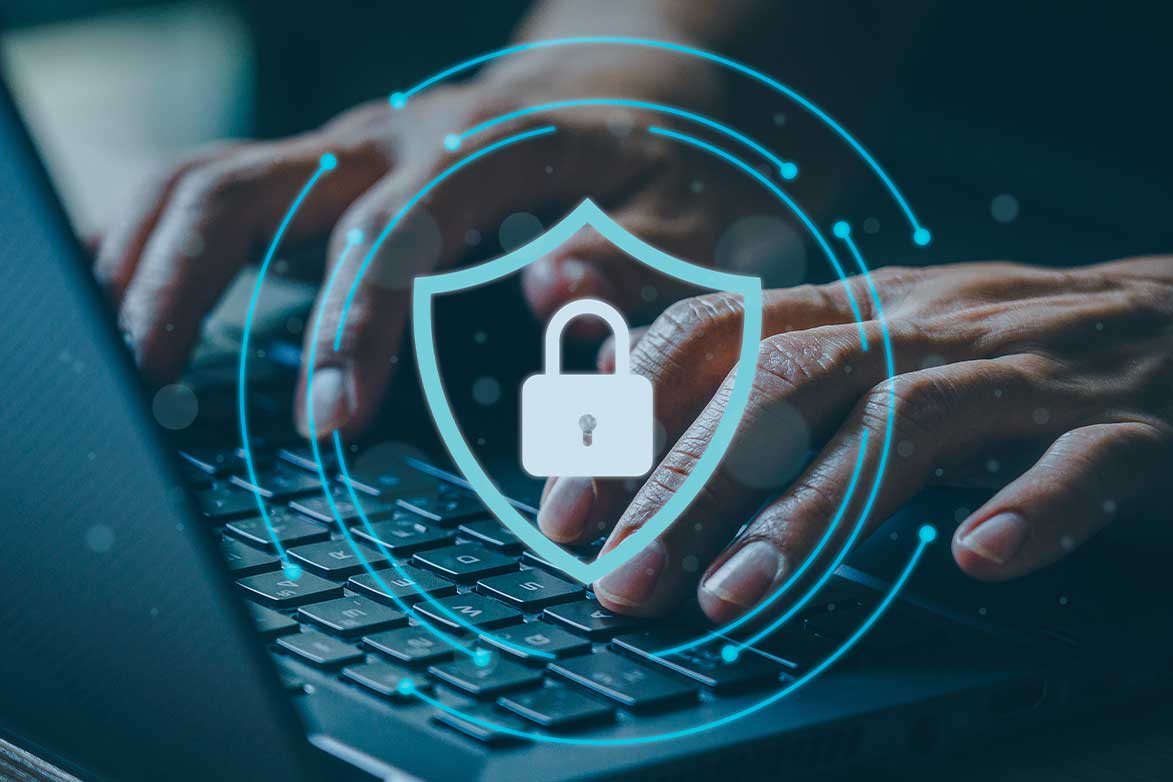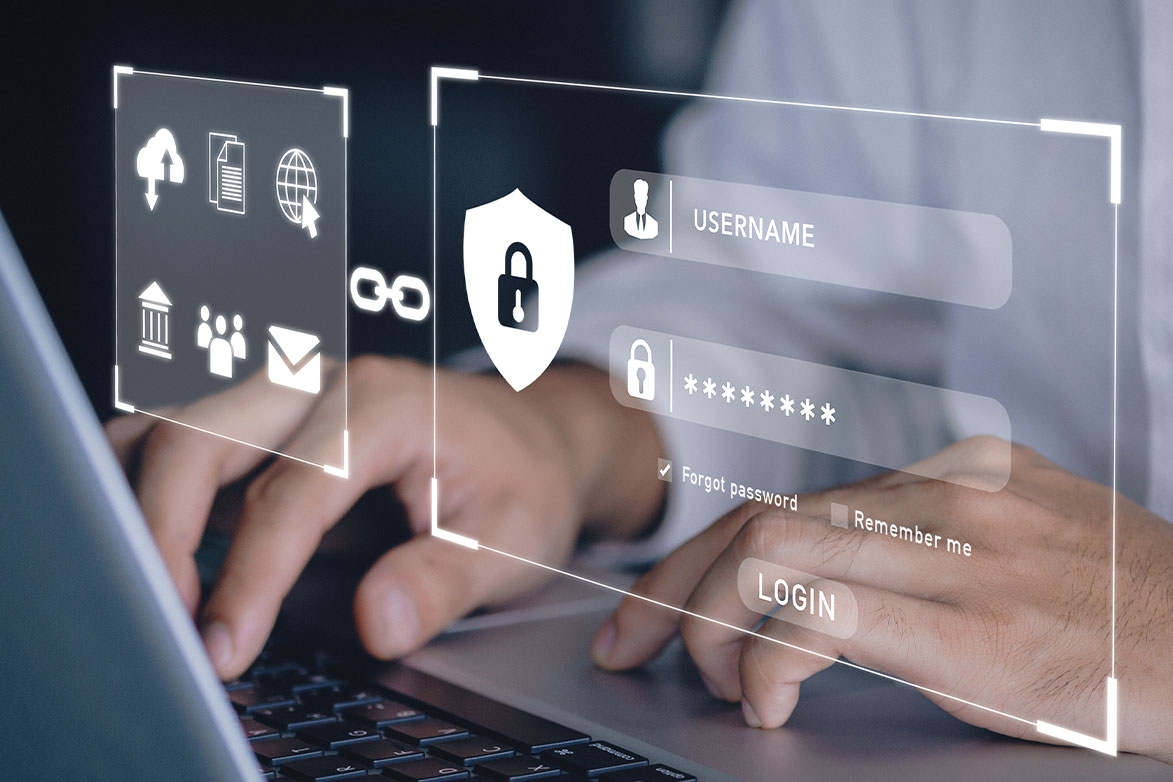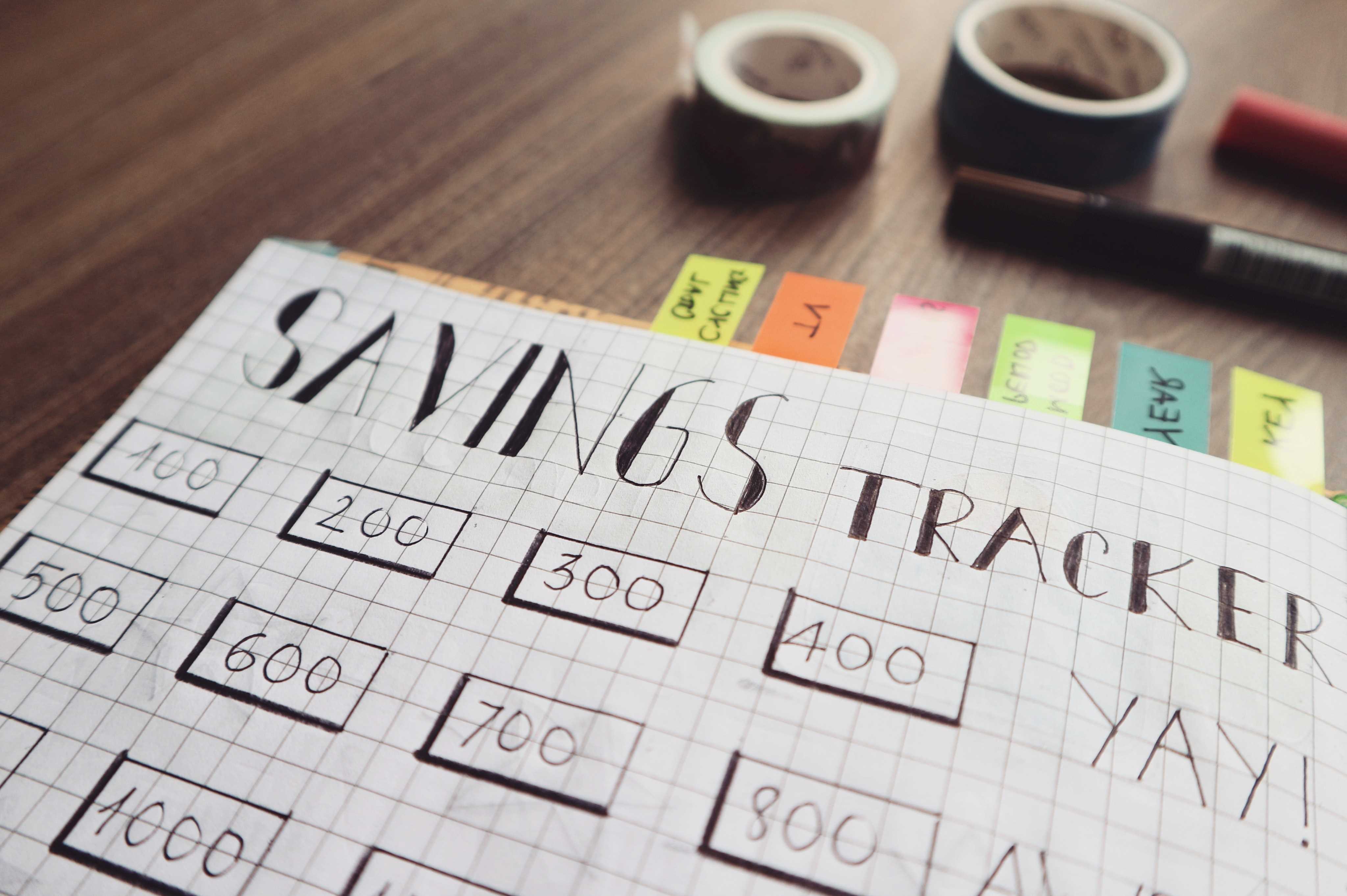
Cyber Security Awareness Month: Four ways to stay ahead of threats in the digital age
Digital services like online and mobile banking have revolutionized the way we manage our finances and personal information. However, the convenience of doing more things online comes with security risks.
October is #CyberSecurityAwarenessMonth, which is the perfect time to get informed about today’s cybersecurity risks and learn how you can be more cyber-safe while online. Protecting yourself from cybercrime means taking preventative action in four key areas. Keep reading to learn more about each of these.
Table of contents
1. Protect Your Devices
Computers and cell phones are essential for everyday digital interactions, making it important to protect all the devices you use regularly. Here are a few tips:
Consider installing antivirus software. Antivirus software is designed to detect and prevent malware from infecting your devices. Make sure you install reputable antivirus software and keep it up to date to ensure maximum protection.
Use a firewall. This helps to prevent unauthorized access to your devices by monitoring incoming and outgoing network traffic. Make sure your firewall is turned on and configured properly.
Do regular software updates. Routine software updates often include security patches to fix vulnerabilities within your devices. Regularly check for and install new software updates to keep your devices secure.
Be cautious about what you download. To avoid downloading harmful software or viruses, only accept downloads from trusted sources and be wary of emails or pop-ups that ask you to download something. Before downloading anything, verify that the software is reputable and has been downloaded by others without issue.
Turn off your device when you are not using it. This can reduce the risk of cyberattacks by preventing unauthorized access to your device. Additionally, when your computer is turned off, it is not connected to the internet, making it less vulnerable to remote attacks.
Always enable a passcode. Passcodes should be longer and more complex than the generic four-digit passcode your phone or computer prompts you to enable when you first set up your device.
Implementing each of these measures, or a combination of them is the first step to securing your devices.
2. Secure Your Accounts
Your accounts include those used for online banking, social media, email, and any other digital accounts you may access through apps on your phone, online retailer websites, or other providers.
One of the easiest ways to secure your accounts is by enabling multi-factor authentication (MFA) if it is an option, especially on those accounts that hold personal information. MFA requires that you provide multiple forms of identification beyond just a password in order to access an account. For example, you may have to provide a password, a security key, and/or a fingerprint. Two-factor authentication (2FA) is another approach to add an additional layer of security.
Using MFA or 2FA helps prevent cyberattacks by making it more difficult for hackers to access your accounts. Even if a hacker obtains your password, they will not be able to access your account without the second or third form of authentication.
Another simple way to secure your accounts is by turning on activity notifications. For example, failed login notifications will notify you if someone attempts to access your account but fails because they have entered the wrong password. This can alert you to potential hacking attempts, allowing you to take action to secure your account quickly.
Banking notifications, such as notifications for any large transactions or changes to your account information, can also help you detect and prevent cyberattacks. For example, if you receive a notification for a large transaction that you did not authorize, you can immediately contact your bank to report the suspicious activity and prevent further unauthorized transactions.
Lastly, use a password management tool. These software programs generate strong, unique passwords for each of your online accounts and store them in an encrypted database. This makes it easier for you to use strong and unique passwords which will reduce the risk of password-related cyberattacks. MFA can also be enabled on your password manager account to add an extra layer of security.
3. Retain Your Data
Your data includes any personal information such as your banking and credit card details, Social Insurance Number (SIN), sensitive documents, details about your family, home, place of work, etc. This information should be kept in your control whenever possible.
You can retain more control of your data by minimizing your digital footprint. This means reducing the amount of personal information you make available online, making it harder for cybercriminals to steal your identity, commit fraud, or launch phishing attacks.
By limiting the amount of information available about you online, you reduce the risk of being targeted in social engineering attacks, where hackers use personal information to trick you into revealing sensitive information.
Unfortunately, there are ways you can accidentally reveal personal data to cybercriminals. Sometimes, public Wi-Fi networks can be set up in your favourite café or library that may be illegitimate or unsecured. Cybercriminals can use these compromised networks to collect your information while you use the Wi-Fi network.
It is wise to avoid activities that require a secure network like online banking while on public Wi-Fi. If you must access sensitive information while in public, be sure to use a virtual private network (VPN) to encrypt your connection and protect your data.
4. Prevent The Attacks
The final way to maximize your security is by understanding how to identify and handle incoming attacks.
Be cautious of emails, texts, or phone calls that are unexpected. Verify the authenticity of any requests for personal or financial information. Look for signs of suspicious activity, such as a sender's email address not matching the name of the supposed sender or an email that contains spelling and grammar errors. It's also a good idea to hover over links in emails before clicking them to ensure that they are directing you to a legitimate website.
If you receive suspicious communication that claims to be from your banking institution, a streaming platform, or a company you make purchases from, it's important to contact the institution directly to verify the authenticity of the communication. A real email or phone number can usually be found on a company or institution's website.
Do not click on any links or provide any information about the suspicious communication until you have confirmed its legitimacy. By taking this precaution, you can avoid falling victim to a phishing attack and protect yourself from cybercrime.
What To Do If You Are a Victim of Cybercrime or Fraud
Cybercriminals are always trying to adapt their methods to bypass security best practices. When a security breach does occur, these are the defensive measures that should be taken as soon as possible:
-
Contact your financial institutions: If your financial information has been compromised, contact your bank or credit card company immediately to report the fraud.
-
Change your passwords: Change the passwords for any accounts that have been compromised and make sure to use strong, unique passwords for each account.
-
Monitor your accounts: Regularly monitor your accounts for any suspicious activity and report any additional instances of fraud immediately.
-
Place a fraud alert: Consider contacting your Canadian credit bureau to place a fraud alert on your credit report. This will make it more difficult for criminals to open new accounts in your name.
Protecting your personal information and devices while remaining up to date on the latest cyber threats is essential to keeping your finances and data secure. This Cyber Security Awareness Month, stay vigilant and apply this advice to all digital aspects of your life to avoid becoming a victim of cybercrime.
Related Articles

Five Common Cybercrimes

Data Privacy

Financial Self-Care

Five Common Cybercrimes

Data Privacy


 Search
Search







 Help
Help

